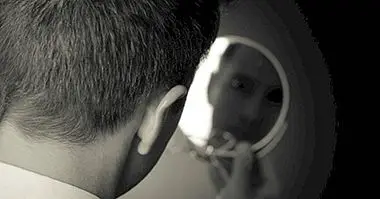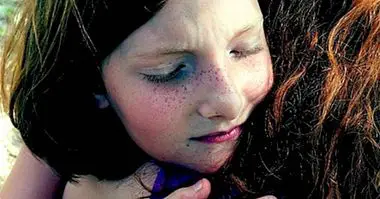Selective mutism: symptoms, causes and treatment
When he is at home, Javi is a very moved and happy child, who is always asking his parents about how things work and tells them his thoughts and dreams. However, one day the teachers of their school call their parents to tell them that the child does not talk to their classmates or teachers, remaining mute before the attempts of others to interact with him although he usually responds on the basis of gestures.
Although at first they believed that it was mere shyness, the truth is that he has not spoken a word since the beginning of the course two months before. After arranging and conducting a medical and psychological exploration of the child, it is diagnosed that Javi suffers the disorder known as selective mutism .
- Related article: "The 16 most common mental disorders"
Selective mutism: characteristic definition and symptoms
The aforementioned disorder, selective mutism, is a form of childhood disorder linked to anxiety in which the individual who suffers it is unable to speak in certain contexts.
The symptoms of selective mutism they are the diminution and disappearance of the capacity of speech in certain circumstances or before certain people, generally before people outside the circle closest to the child. This apparent lack of capacity only occurs in these circumstances or situations, with which in other contexts or with relatives in which it feels safe the child communicates normally. It is not a matter of lacking communication skills or that these have deteriorated for some reason, simply the child can not start them.
These symptoms occur for at least one month without any relevant change that justifies the appearance of possible shyness. Nor is it a difficulty caused by a medical illness that can justify the lack of oral communication.
Although the selective term may make it seem that the lack of speech is intentional, in a large number of cases it is not. In fact, often the child actually wants to express himself despite being unable to do so, and sometimes resorting to strategies such as the use of gestures. In spite of this, in some cases it does occur intentionally, as an attempt to show opposition to a situation or person.
So, selective mutism supposes a high level of anguish and suffering , besides that it produces a significant alteration in the social and academic life of the minor.
- Maybe you're interested: "Personality Disorder by Avoidance: extreme shyness?"
Causes of this disorder
The diagnosis of selective mutism demands that the presence of medical diseases be ruled out or that the lack of speech is due to insufficient development of this capacity to allow oral communication.
The causes of this problem are mainly psychological , specifically to the presence of anxiety. It is an affectation similar to social phobia (in many cases comorbid with selective mutism), in which there is also a fear of being judged and evaluated. Risk and pressure when they are the center of attention cause the subject not to act, which has been understood as a response learned through conditioning.
It has also been observed that there is some hereditary family influence , since it is a more frequent disorder in families with anxiety or mood problems.
Because of the absence of speech, selective mutism can make the person suffering from it appear sullen and lack of interest in communication , with which the social contact diminishes and rejection may appear towards the minor in question. This fact reinforces the situation of mutism by producing greater tension and anxiety when judged negatively by others
Treating selective mutism
Although in some cases the disorder subsides after several months, in other cases it can last for years, which makes the social adaptation of the child in question difficult. The participation of the family and the environment is fundamental . It is especially important not to criticize the child's lack of speech, which can reduce their self-esteem and make the picture worse. Teaching forms of socialization, highlighting their strengths and supporting their efforts are very useful.
One of the most common types of psychological treatment in case of selective mutism is the use of different exposure therapies to phobic stimulation together with the handling of contingencies that may affect the emission or non-emission of speech.
Forms of psychological intervention
Exposure to situations must be gradual and careful. Performing a progressive immersion is also useful, for example moving people with whom the child do not be afraid to communicate to environments that are more problematic . With time, a stimulating fade will fade, stimulating, in which stimuli and people are gradually removed that provide security to the child so that this will eventually begin to communicate in other contexts.
Self-filming filmed and tricked It is also a fairly common technique: it records the child interacting with their close relatives in situations in which they communicate verbally and then modify the recording in a way that seems to be communicating with others. In the video is going to go forward in a hierarchical way, making him answer first in a monosyllabic way and little by little increasing the level until he speaks spontaneously.
It also seems to be effective the use of modeling and theatrical activities , in which the child can see how others interact and at the same time can begin little by little to express words that are not his but those that come in the script, so that its content can not be judged. Little by little the infant can incorporate his own ideas into the conversation. The level of complexity can be increased if the place where the videos are made is changed, first making videos in very safe environments so as to gradually move away from them.
There are also some programs social skills training that can help the child to gradually let go and express themselves. Cognitive-behavioral therapy has also been shown to be effective when the child can restructure his thoughts and beliefs about how he is seen by others.
- Maybe you're interested: "The 14 main social skills to succeed in life"
Bibliographic references:
- American Psychiatric Association. (2013). Diagnostic and Statistical Manual of Mental Disorders. Fifth edition. DSM-V. Masson, Barcelona.
- Thief, A. (2012). Child Clinical Psychology. CEDE Preparation Manual PIR, 03. CEDE: Madrid.
- Rosenberg, D.R .; Ciriboga, J.A. (2016). Anxiety disorders. In: Kliegman RM, Stanton BF, St Geme JW, Schor NF, eds. Nelson Textbook of Pediatrics. 20th ed. Philadelphia, PA: Elsevier.



















